20 play suggestions with the Pop it's!
Fad over? Now it's time to work on your motor skills!
Pop it in combination with sensory motor play
Were pop-its a brief fad? Do you still use them, and if so, how?
I still think they're great for fine motor and sensory skills. There's so much more to them than just popping.
This Facebook post has generated a wonderful and incredibly creative collection of ideas for all sorts of things you can do with Pop-Its. Plenty of reasons not to leave them in fabric! Get them out of the closet and offer them in a new way. Perhaps this will spark your imagination for some ideas of your own!
Kim:
1. Place various liquids in a circle (water, oil, yogurt, gel, etc.). Perhaps add some food coloring. Then have the children tap their fingers and see what happens when the liquids mix. (A pipette, brush, or spoon are great additions.) You can also focus solely on the color aspect and use different colors of paint that can be mixed together. If you don't want a wet mess, colored rice is also a good idea. However, a towel underneath will absorb a lot because the amounts are small.
Petra:
2. Use during Senso. With shaving foam, hair gel , or something else, the pop-it feels even better!
Annette:
3. They're apparently very tasty too; one of my babysitters puts part of the Pop It in his mouth. You can simply wash them. You can fill them with melted chocolate melts or juice with gelatin, which feels different and is delicious, but unfortunately, they can't pop the candy that way.
Anneke:
4. And completely out of the box, place the pop-its on the floor and create a barefoot path . If necessary, close your eyes and have a classmate guide you.
Judith:
5. The water beads fit perfectly!

Pop its for fine motor skills and didactic learning
Danielle:
6. Roll a die: you can pop out the number you see . Who is the first to fill the entire Pop-It? You can vary this by filling the holes with materials (beads, pom-poms, etc.) corresponding to the number rolled.
Miriam:
7. Have one child perform a task (stack a number of blocks, walk in a circle, collect 5 red objects, etc.). Another child pops one ball at a time with one finger. When the shape is completely popped, turn around and pop again. How many times did the entire shape pop before the task was finished? Or how many pops did you manage before the task was finished? (For the good counters!)
Sara:
8. Put letters in the pop it and then use the tweezers to take out the letters and make little words.
Ellen:
9. Continue patterns by adding colored balls.
Sanne:
10. Have children compete with a die , taking turns rolling and popping that number, and so on until someone wins because their die is already finished. Anneke:
Esther:
11. Learning to count with two pop-its next to each other
Anneke:
12. Use the letters to create words in the row of the pop-it. So, short words and long words.
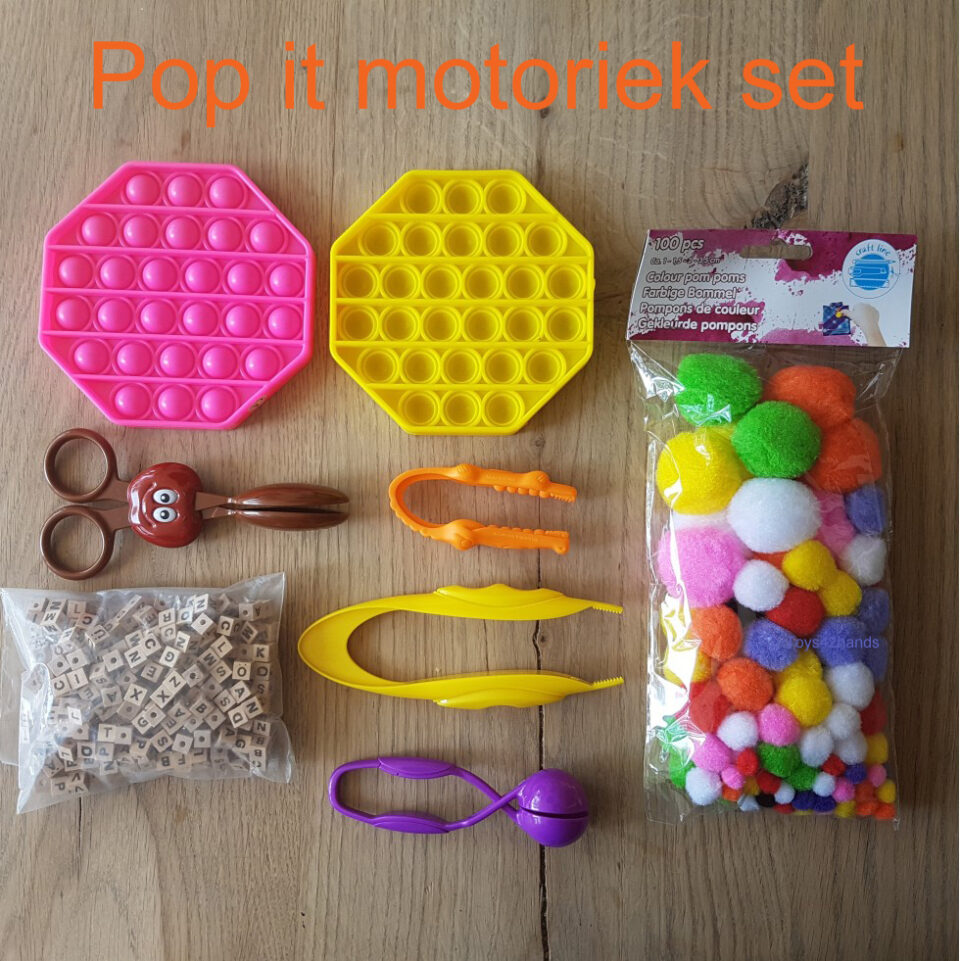
Using pop its for relaxation and concentration
Chaja:
14. We regularly give it to children so that they can hear with more attention , and leave it up to the children to decide what they want to do with it!
Miriam:
15. Have the children close their eyes. Pop a few circles. How many pops did you hear? Of course, count them by having one child pop them back.
Nienke:
16. We use them in combination with a coloring page . First, you practice the tweezers grip (removing the little balls) and then coloring small areas. Always a big hit!
Gea:
17. The pops can go in the “fidget basket” for children who like to have something in their hands during circle time!
18. Or pace yourself ! Who can complete all the laps (and back) the fastest? Use a timer to record your time .
Inge:
19. We have tic-tac-toe with the pop-its here.
20. You can also put balls in the pop it and then pop them up/away .

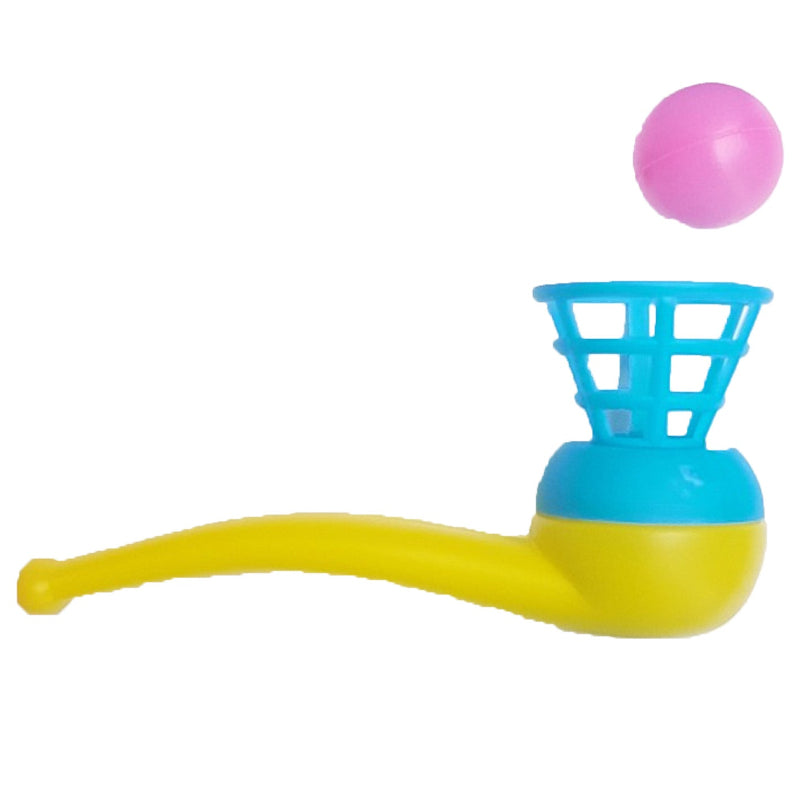







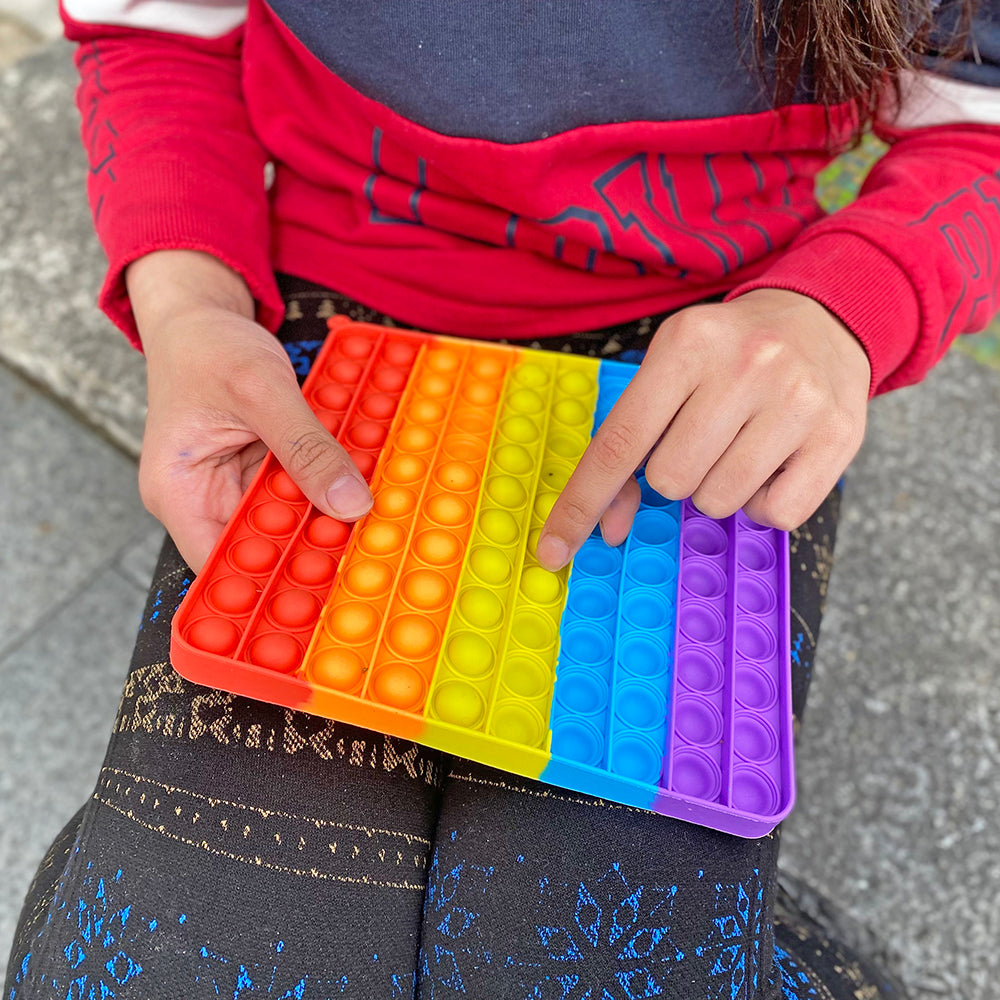

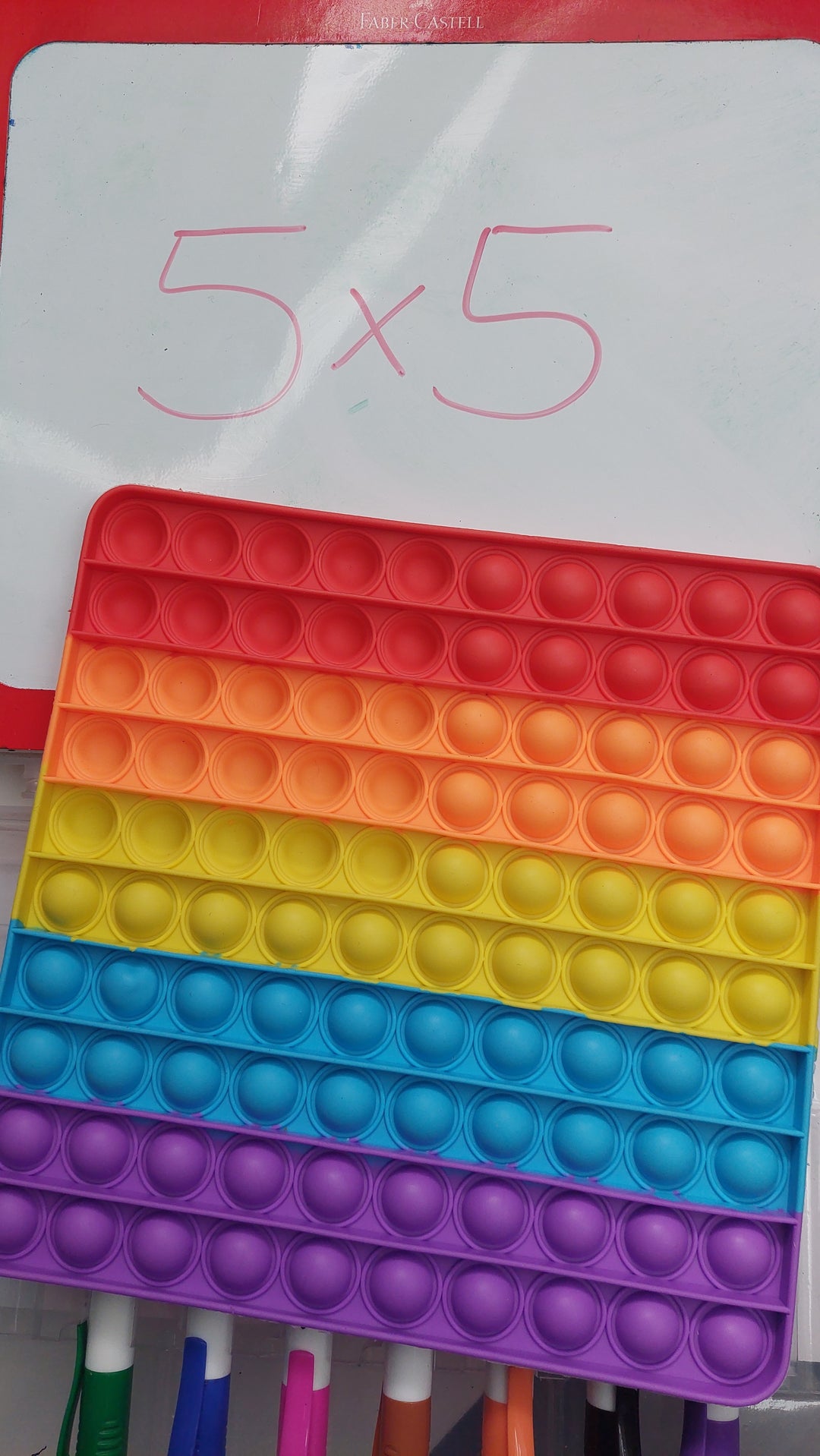


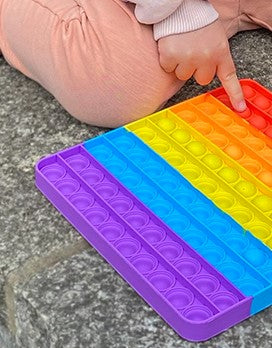


Leave a comment